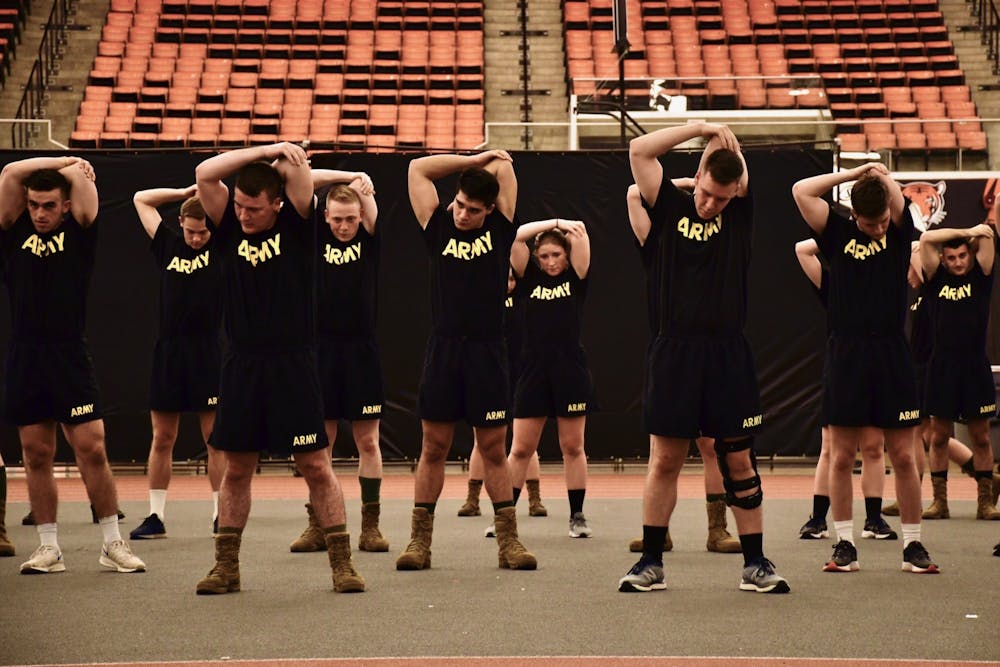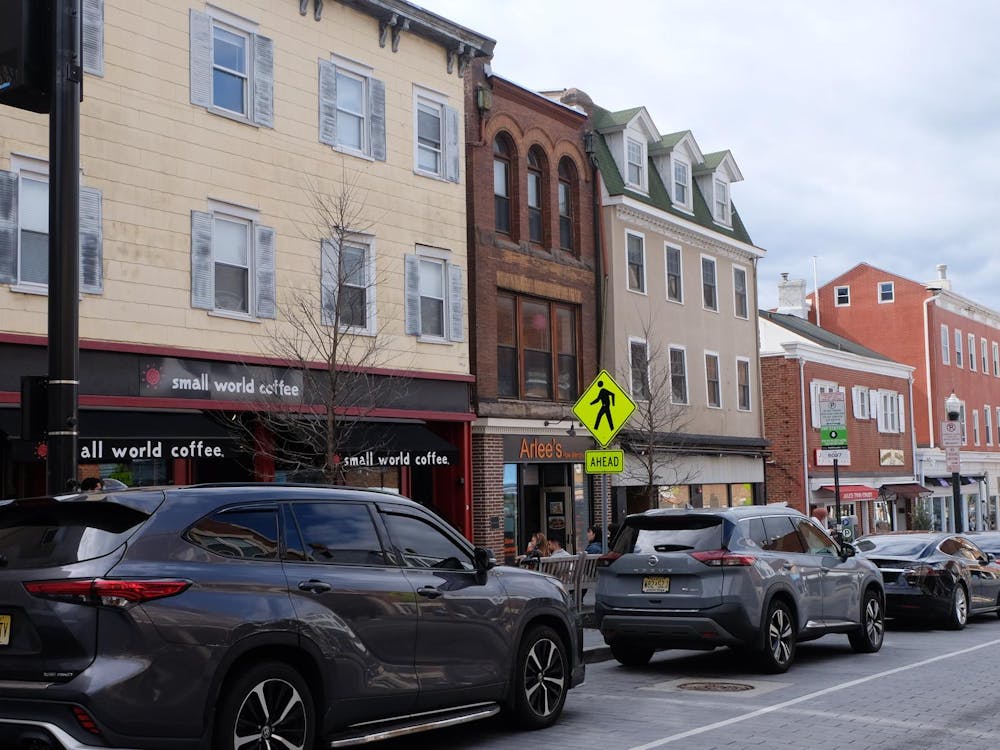For over 100 years, Princeton’s Army Reserve Officers’ Training Corps (ROTC) program has prepared students for service in the United States military. Established in 1919 after World War I with the mission of graduating trained, battle-ready officers who would be able to serve their country in times of crisis, the Tiger Battalion was one of 125 ROTC units created by the War Department.
One of Princeton ROTC’s highest-ranking alumni is General Mark Milley ’80. Milley serves as the current Chairman of the Joint Chiefs of Staff, the highest-ranking officer in the military. In an interview with The Daily Princetonian, General Mark Milley ’80 cited ROTC as a key factor drawing him to Princeton over peer schools like Harvard.
“Princeton has an ROTC program. The other schools at the time didn't have that, except for West Point,” Milley told the ‘Prince.’
The history that Milley is referring to, of ROTC at Princeton and the other Ivy League schools, has to be broken down into multiple eras. ROTC had a strong presence on Princeton’s campus throughout in its first 50 years of existence, followed by backlash throughout the 1960s and ’70s as a result of the national anti-war movement. In the decade following the 2011 repeal of the military’s “Don’t Ask, Don’t Tell” policy, ROTC has seen a resurgence.
In 2019, 67 students were enrolled in the ROTC program at Princeton, marking an over 100 percent increase in enrollment since 2013. This includes students serving in the Army program, the most highly enrolled of the three programs, as well as students in the separate Air Force ROTC and Navy ROTC programs, which are both hosted by Rutgers University.
ROTC cadets are expected to attend Physical Training sessions multiple times a week, while also taking courses in Military Science throughout their four years at Princeton. Cadets also participate in special programs such as the Ranger Challenge, Field Training Exercises, and Combat Water Survival Training.
Princeton students in ROTC are eligible to apply for scholarships, some of which cover the entire cost of tuition throughout their four years of college. With these scholarships come the obligation to give eight years of service to the Army, or serve in the Army Reserve or Army National Guard.
In the years between the World Wars, the program boasted 2,000 graduates. In the lead-up to World War II, enrollment increased further, as 350 students enrolled in the program in 1939. In the 1960s, however, national anti-war sentiment coalesced into a movement against the ROTC program on campus.

In 1963, the Army ROTC failed to reach its student enrollment quota and as a result, the program had to receive a special waiver from former Army Secretary Stephen Ailes ’33 to operate. In 1968, former University president Robert F. Goheen ’40 GS ’48 ordered the formation of a special committee with the purpose of evaluating whether ROTC should remain at Princeton.
The committee allowed the program to remain, but in 1969, the faculty voted to end the former policy of granting academic credit to students participating in ROTC and taking military science courses. Faculty also voted to remove the title of “professor” for ROTC instructors, granting them the title of “visiting lecturer” instead.
At this time, across the country, the University served as a site for anti-war protests. October of 1965 saw the formation of Princeton Students for a Democratic Society (SDS), a branch of a nationwide student activist movement against the Vietnam War. The group held protests against the war in front of Nassau Hall and Robertson Hall, and after the formation of the ROTC special committee, began protesting the University’s ROTC program itself. Student protests continued, and in 1970, two University students were among four arrested and charged for setting fire to the Princeton ROTC Armory, in response to the U.S. invasion of Cambodia.
The Council of the Princeton University Committee (CPUC) voted to put an end to the ROTC program in 1971. Army and Air Force ROTC planned to leave in spring of 1971, while Navy ROTC would remain until 1972.

In response, students and the Undergraduate Student Government organized against this total abolishment of ROTC from campus. In April 1971, the student body passed a referendum asking, “Should ROTC be retained at Princeton?” 1,239 students voted in favor of retaining ROTC, and 945 against. Subsequent questions on the referendum about the future relationship between Princeton and the ROTC culminated in a suggestion that the program remains an extracurricular activity without academic credit.
Subsequent discussions resulted in Army ROTC remaining on campus, while Navy and Air Force ROTC departed in 1972. In October 1973, the CPUC held a final vote to allow the Army ROTC program to remain at Princeton.
Across the Ivy League, similar protests, debates, and battles against ROTC took place in the late ’60s and ’70s. In 1969, 300 students at Harvard “stormed University Hall and demanded that the University sever all ties to the Reserved Officers' Training Corps” after Harvard faculty voted to remove ROTC as an academic program and reclassify it as an extracurricular.
The protest was broken up by around 400 police officers dressed in riot gear, resulting in a subsequent student strike. The Harvard ROTC soon withdrew from campus. Dartmouth’s ROTC exited in a similar fashion, following the occupation of Parkhurst Hall by students, several of whom were jailed.
At Columbia, school Trustees voted to remove the ROTC program in 1969, following student protests and strikes. In the spring of 1969, Brown faculty members voted to remove academic credit from ROTC Military courses, and the program subsequently departed from its campus.
Yale’s program ended officially in 1969 but was phased out to preserve the scholarships of the students involved. At the University of Pennsylvania, ROTC lost its academic credit but remained on campus, and Cornell University kept its ties with all three branches of ROTC throughout the 1960s and ’70s. Cornell’s unique position was due to its status as a land grant institution; if Cornell abolished ROTC, it would have lost all public funding.
By the end of the Vietnam War, ROTC programs remained at Princeton, Cornell, and the University of Pennsylvania, while Harvard, Dartmouth, Columbia, Brown, and Yale no longer retained the programs. Cornell was the only school to offer academic credit for military science courses.
While protests and debates settled down throughout the 1980s, the 1990s saw a resurgence of campus discussion around ROTC in the wake of the 1993 “Don’t Ask, Don’t Tell” (DADT) policy that prohibited openly LGBTQ+ individuals from serving in the military.
The campus was embroiled in conversation around the policy and the implications of banning ROTC at Princeton. In November of 1993, the Whig-Cliosophic Society held a faculty-student debate on the issue, with two professors supporting the ban and two ROTC cadets opposing it.
Others took to publishing their opinions in the ‘Prince,’ with one student framing the issue as “one simple question: does Princeton support discrimination?” The student continued, writing that “As long as ROTC remains on campus under any pretense, the answer will be yes. As long as ROTC is present with Princeton approval, our university's rhetoric of equality is only empty promises.”
Once again, Princeton faculty rallied to ban ROTC, a move that was denied by University Trustees in 1993.
While some of Princeton’s peer institutions, including Harvard, retained their bans on University ROTC programs, others that hosted the program dealt with similar difficult questions as they balanced supporting their students and accepting the discriminatory policy.
Acknowledging this contradiction, the Dartmouth Board of Trustees said in a 1994 statement, “The policy forces Dartmouth, as well as other colleges and universities, to make an unconscionable choice as to which students they wish to disadvantage.”
However, with the repeal of DADT in 2011, ROTC saw a resurgence among Ivy League institutions. Columbia, Harvard, and Yale reinstated the programs and approved academic course credit, and Brown reinstated it without course credit. Eventually, schools such as Princeton and Harvard saw the return of Navy and Air Force programs.
Milley commented on the importance of maintaining the strength of ROTC programs in the Ivy League.
“We need to make sure that all of the various universities in America have an opportunity to participate in ROTC. West Point’s a wonderful institution, Annapolis is great, the Air Force Academy is great. But we want more diversity in our officer corps than just a military academy,” Milley told the ‘Prince.’
After years of debates, countless votes, and nationwide discussion, ROTC seems to have firmly established itself at Princeton and among its peer institutions. Perhaps the fact most indicative of the program’s success is the ability of Milley, a Princeton graduate, to go on and achieve the highest rank in the United States military. Yet, just as in the 1930s, at the peak of ROTC enrollment, there is no guarantee of what is to come in the nation’s military and social history, and no telling when the next campus conversation might begin.
Sophie Glaser is a Features staff writer, News contributor, and copy editor for the ‘Prince.’
Please direct any corrections requests to corrections[at]dailyprincetonian.com.








